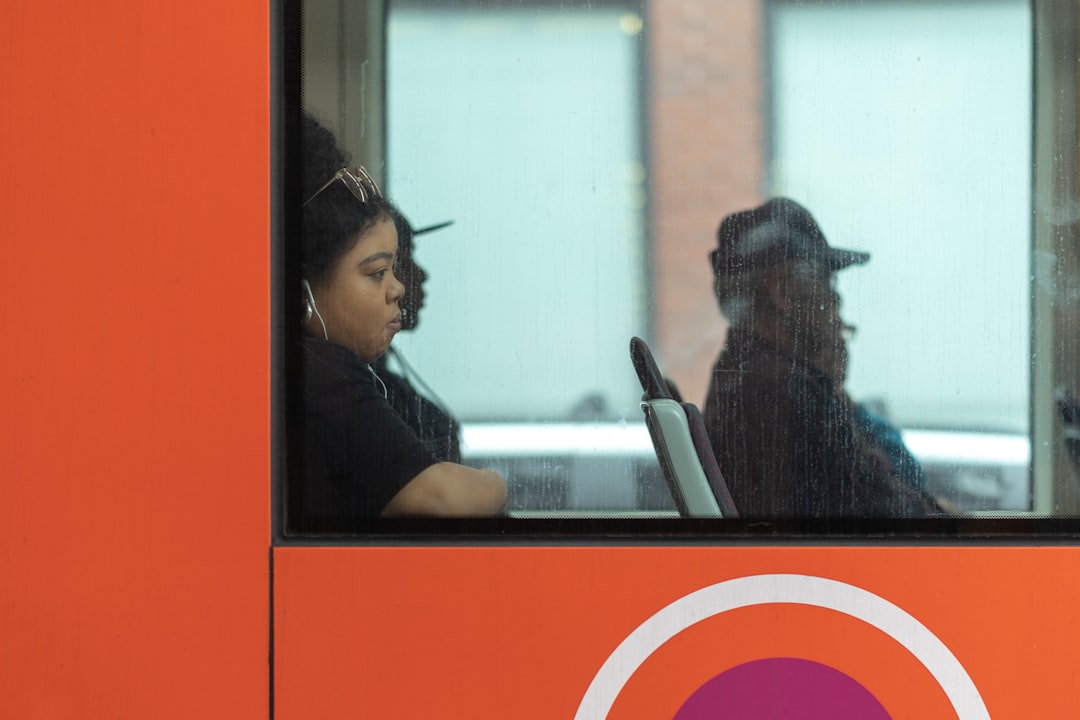Why Public Transport Matters for Urban Sustainability
Sustainability and urban public transportation are deeply intertwined in the quest to combat climate change and promote urban development. Here are the key points:
- One-third of cities’ emissions come from transport, a major contributor to climate change.
- To meet the 1.5°C global warming goal, cities must double the proportion of journeys taken by public transport over the next decade.
- With an expected increase of 2.5 billion people in cities by 2050, public transport needs to be expanded and improved to handle the growth sustainably.
A reliable, affordable, and accessible public transport system is vital for reducing emissions, enhancing mobility for all residents, and making cities more livable. For cities to be sustainable, public transport must shift from an option to the preferred mode of travel.
Enrique Peñalosa, former Mayor of Bogotá, once said, “A developed country is not a place where the poor have cars. It’s where the rich use public transportation.” This highlights the essential role of public transport in creating equitable and sustainable urban environments.

Sustainability and urban public transportation word guide:
The Importance of Public Transport in Urban Sustainability
Reducing Carbon Emissions
One of the most effective ways to cut down on carbon emissions is by using public transport. According to the C40 network, transport is responsible for one-third of cities’ emissions. If we want to keep global warming below 1.5°C, we need to double the number of public transport journeys in cities over the next decade.
Public transport like buses, trains, and trams emits far less CO2 per passenger compared to private cars. For example, buses and trains can cut GHG emissions by up to two-thirds per passenger per kilometer. This makes public transport a key player in the fight against climate change.

Enhancing Urban Mobility
But it’s not just about reducing emissions. Urban mobility is another big benefit of sustainable public transport. When public transit is reliable, affordable, and accessible, it makes it easier for everyone to get around.
Right now, only half the world’s urban population has convenient access to public transport. This means many people are forced to rely on private cars, which leads to more traffic, higher emissions, and less equitable access to opportunities.
Investing in public transport can make a huge difference. For example, Jakarta’s award-winning system offers a three-hour window with one flat fare, making it easier and cheaper for people to travel. Similarly, cities like Toronto and Bogotá are leading the way with investments in public transport that boost accessibility and economic growth.
Socioeconomic Factors and Urban Density
Urban density plays a big role in how we use public transport. As personal incomes rise, people often move to less dense areas where public transport is less available. This leads to more car ownership and higher emissions.
Cities need to rethink their urban planning to make public transport more attractive. This includes better land use policies, pricing strategies, and technological innovations. For instance, Jakarta and Bogotá have successfully integrated various modes of public transport to serve more people efficiently.
Public transport is not just for commuters. It must be inclusive, serving women, children, the elderly, and people with disabilities. Studies from cities like New York and Los Angeles show that women often travel at different times and with different needs compared to men. Making public transport safer and more accessible can encourage more people to use it.
In summary, sustainability and urban public transportation go hand in hand. By reducing carbon emissions and enhancing urban mobility, public transport can make cities more livable and equitable. The next section will dig into the key benefits of sustainable public transport, including economic growth, social equity, and environmental protection.
Key Benefits of Sustainable Public Transport
Economic Growth and Job Creation
Public transport has a powerful role in boosting economic development and creating jobs. It connects people to workplaces, schools, and leisure activities, which fuels local economies. For example, Toronto’s investment in public transport has shown significant economic returns. By improving accessibility, the city has increased land and property values, spurred tourism, and regenerated poorer areas.
Public transport systems also generate direct employment. Jobs are created in the construction, operation, and maintenance of transport networks. Additionally, by connecting people to job opportunities, public transport indirectly supports broader job creation across various sectors.
Social Equity and Accessibility
Public transport promotes social equity by providing affordable and accessible mobility options for everyone, including vulnerable groups like the elderly, disabled, and low-income individuals. In many cities, a lack of reliable public transport forces people to rely on expensive private cars or miss out on opportunities altogether.
For instance, Bogotá has successfully implemented a system that includes emergency bike lanes and pedestrian-friendly streets, making transport more inclusive. Similarly, Jakarta‘s BRT system offers a flat fare for a three-hour window, making it more affordable for daily commuters.
By ensuring that public transport is safe, affordable, and accessible, cities can reduce social inequalities and improve the quality of life for all residents.
Environmental Protection
Public transport is a cornerstone of environmental sustainability. It significantly reduces air pollution and carbon emissions compared to private cars. For example, buses and trains emit far less CO2 per passenger kilometer, contributing to cleaner air and a healthier environment.
Cities like Toronto and Bogotá are investing in electric buses, which further reduce emissions and rely on renewable energy sources. This not only cuts down on air pollution but also addresses health issues related to toxic emissions, especially in high-pollution areas.
Moreover, public transport encourages the use of more sustainable travel modes like walking and cycling, which have additional health benefits and further reduce environmental impact.

In summary, the benefits of sustainable public transport are extensive, covering economic growth, social equity, and environmental protection. As cities continue to invest in and improve their public transport systems, these benefits will only grow, making urban areas more livable and sustainable.
Next, we’ll explore some case studies of successful urban public transport systems around the world, highlighting what other cities can learn from their experiences.
Case Studies of Successful Urban Public Transport Systems
Toronto, Canada
Toronto’s investment in public transport has yielded significant economic benefits. The city has improved accessibility, which in turn has increased land and property values. Toronto’s public transport system connects people to jobs, training, and leisure activities, boosting local economies. For example, the city’s investments have spurred tourism and helped regenerate poorer areas through improved public transport connections. The system also creates jobs directly in construction, operation, and maintenance, supporting broader job creation across various sectors.
Japan
Japan’s approach to public transport is unique in its integration of leisure, housing, and lifestyle. Major transport development projects in Japan often include amenities like shopping centers, parks, and residential areas. This holistic approach not only makes public transport more convenient but also improves the quality of life for residents. For instance, new train stations are often surrounded by mixed-use developments, making it easier for people to live, work, and play in the same area.
Jakarta, Indonesia
Jakarta has made significant strides with its Bus Rapid Transit (BRT) system. The BRT system in Jakarta is a model of public transport integration. It offers a flat fare for a three-hour window, making it affordable for daily commuters. The system also connects well with other modes of transport, including bikes and pedestrian paths, making it easier for people to switch between different types of transport. This integrated approach helps reduce traffic congestion and pollution, making the city more livable.
Bogotá, Colombia
Bogotá is another excellent example of innovative public transport solutions. The city has implemented a blended financing model to support its public transport system, including electric buses. This model combines public and private funds, making it financially sustainable. The use of electric buses has significantly reduced emissions, improving air quality and addressing health issues related to toxic transport emissions. Bogotá has also reconfigured huge swaths of street space for pedestrian use, making the city more inclusive and environmentally friendly.
Next, we’ll discuss the challenges and solutions for sustainable urban public transport, focusing on overcoming urban density issues and leveraging policy measures and technological innovations.
Challenges and Solutions for Sustainable Urban Public Transport
Overcoming Urban Density Issues
Urban density, or the number of people and jobs per unit of land, plays a crucial role in the sustainability of urban public transportation. High urban density can reduce the need for private vehicles and make public transit more viable. However, as personal incomes rise, people often move to less dense areas, increasing private vehicle ownership.
Solutions:
-
Land Use Planning: Cities can implement zoning laws that encourage higher density and mixed-use developments. This means more people live closer to where they work and play, reducing the need for long commutes.
-
Transit-Oriented Development (TOD): This involves creating residential and commercial spaces around transit hubs. For example, Japan integrates housing, leisure, and shopping around train stations, making it easier for people to use public transport.
-
Incentivizing Public Transport: Offering financial incentives, like subsidized transit passes, can encourage people to choose public transit over private cars.
Policy Measures and Technological Innovations
Effective policy measures and technological advancements are essential for creating sustainable urban public transportation systems. They can help reduce emissions, improve accessibility, and make public transport more attractive.
Policy Measures:
-
Congestion Pricing: Cities like London have implemented congestion fees to discourage car use in busy areas. This reduces traffic and encourages people to use public transit.
-
Parking Restrictions: Limiting parking spaces can make driving less convenient and promote the use of public transportation.
-
Public-Private Partnerships: Governments can collaborate with private companies to fund and operate public transport systems. Bogotá’s blended financing model is a great example, combining public and private funds to support its electric bus fleet.
Technological Innovations:
-
Electric Buses: Switching to electric buses can significantly reduce emissions and improve air quality. Bogotá has successfully implemented electric buses, addressing health issues related to toxic transport emissions.
-
Smart Transit Systems: Using technology to optimize routes and schedules can make public transport more efficient and reliable. Real-time tracking and mobile apps can improve the user experience, making it easier for people to plan their journeys.
-
Integrated Transport Networks: Cities can create seamless connections between different modes of transport, such as buses, trains, and bikes. Jakarta’s BRT system is a prime example of how integrated transport can reduce congestion and pollution.
By addressing urban density issues and leveraging policy measures and technological innovations, cities can create sustainable and efficient public transportation systems. This not only benefits the environment but also improves the quality of life for residents, making urban areas more livable and inclusive.
Next, we’ll answer frequently asked questions about sustainability and urban public transportation, exploring why sustainable transport is important, how cities can improve public transport accessibility, and the benefits of electric buses.
Frequently Asked Questions about Sustainability and Urban Public Transportation
Why is sustainable transport important?
Sustainable transport is crucial for several reasons:
-
Climate Change: Public transport helps reduce carbon emissions. Cars are a major source of greenhouse gases. By using buses and trains, we can lower emissions significantly. According to WRI, making transport easier and cheaper can attract more passengers and reduce car use.
-
Urban Development: Public transport supports urban growth by connecting people to jobs and services. It makes cities more livable and reduces the need for extensive road networks. Urban planning that integrates public transport can lead to more sustainable cities.
-
Public Health: Reducing car use lowers air pollution, which can improve public health. Cleaner air means fewer respiratory issues and other health problems. For instance, rolling out electric bus fleets in high-pollution areas can address health issues related to toxic emissions (Economist).
How can cities improve public transport accessibility?
Improving public transport accessibility involves several strategies:
-
Policy Measures: Cities can implement policies like congestion pricing and parking restrictions to discourage car use and promote public transport. London’s congestion fees are a great example (Economist).
-
Infrastructure Investment: Investing in public transport infrastructure, such as bus lanes, bike paths, and pedestrian-friendly streets, can make it easier for people to use public transport. For example, Bogotá created emergency bike lanes during the COVID-19 pandemic, which led to a significant increase in bike use (Economist).
-
Urban Planning: Transit-Oriented Development (TOD) involves creating residential and commercial spaces around transit hubs. This makes it easier for people to access public transport. Japan’s integration of housing, leisure, and shopping around train stations is a successful example (Economist).
What are the benefits of electric buses?
Electric buses offer several benefits:
-
Emission Reduction: Electric buses produce zero tailpipe emissions, which helps reduce air pollution and combat climate change. Cities like Bogotá have implemented electric buses to reduce toxic transport emissions (Economist).
-
Air Quality: By reducing emissions, electric buses improve air quality, leading to better public health. Cleaner air means fewer respiratory problems and other health issues.
-
Renewable Energy: Electric buses can be powered by renewable energy sources like solar and wind. This makes public transport even more sustainable. As we seek to triple renewable energy by 2030, electric public transport can support this goal.
By understanding the importance of sustainable transport, improving accessibility, and leveraging the benefits of electric buses, cities can create more livable, inclusive, and environmentally-friendly urban areas.
Conclusion
Public transport is a cornerstone of urban sustainability. It touches every aspect of city life, from reducing carbon emissions to fostering economic growth and ensuring social equity.
Doot Scoot is committed to promoting sustainable urban mobility. By focusing on eBikes and other eco-friendly transport options, we aim to be at the forefront of this change. Our comprehensive reviews, in-depth guides, and expert comparisons help urban dwellers make informed choices about sustainable transportation.
Public Transport Benefits
Public transport offers numerous benefits:
-
Economic Growth: It boosts local economies by connecting people to jobs, training, and leisure activities. For instance, Toronto’s investment in public transport has revitalized poorer areas and increased property values.
-
Social Equity: Public transport ensures that everyone has access to essential services and opportunities. It empowers vulnerable groups by providing affordable and reliable transportation options.
-
Environmental Protection: By reducing the number of private vehicles on the road, public transport lowers carbon emissions and improves air quality. Cities like Bogotá have successfully implemented electric buses to combat air pollution.
Future Growth
The future of urban mobility hinges on sustainable public transport. Cities must invest in infrastructure, adopt innovative policies, and leverage technology to create efficient and inclusive transport systems. For example, the GCC countries are building new metro, tram, and bus networks to reduce CO2 emissions and congestion.
At Doot Scoot, we believe in a future where urban transport is clean, efficient, and accessible to all. Our focus on eBikes aligns with global efforts to promote sustainable mobility. By continuing to innovate and advocate for eco-friendly transportation, we can help create a better, more sustainable world.
For more information on how Doot Scoot can help you make sustainable transport choices, visit our homepage.
By understanding the critical role of public transport in urban sustainability, we can work together to create cities that are not only livable but also thriving and resilient. Let’s make a commitment to sustainable urban transport for a brighter future.










